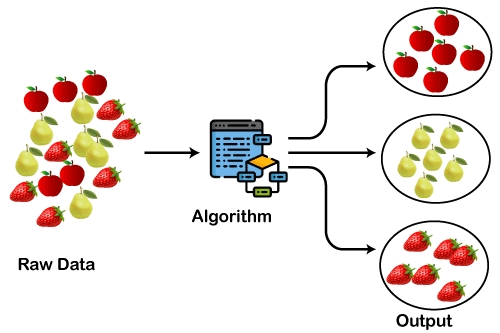Machine Learning and AI Models
There are three main types of machine learning models:
Supervised learning
In supervised learning, models are trained on labelled datasets that contain inputs and desired outputs. For example:
Image classification models are trained on images labelled with the object classes they depict (e.g. apples and bananas). Given new images, the models can predict these labels.

Supervised learning requires collecting and labelling large training datasets, which can be expensive and time-consuming. However, performance is often strong after sufficient training data is provided.
Unsupervised learning
Unsupervised learning models analyse unlabelled input data to find patterns and structure. Some examples include:
Clustering algorithms group data points (e.g., apples, pears and strawberries) based on detected similarities. This can reveal categories within datasets.

Identifies outliers that are significantly different from the norm.
Association rule learning finds interesting relationships between variables.
Unsupervised learning derives insights directly from data distributions without needing labelling, reducing data demands. But performance metrics can be harder to define.
Reinforcement learning
In reinforcement learning, agents interact dynamically with environments, receiving rewards or penalties for actions to learn behaviours that maximise cumulative reward. For instance:
Robot dogs taught to walk properly through trial-and-error reinforcement of stable gaits.

reinforcement learning Game-playing algorithms that learn winning strategies based on scores.
Reinforcement learning enables very responsive adaptation but requires carefully engineering reward functions.
These three model types are integral to machine learning, with a vast array of models designed for diverse tasks. While exploring various models is beyond this text's scope, the focus here is on a unique machine learning architecture: neural networks.
Last updated
Was this helpful?
